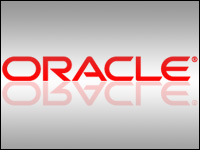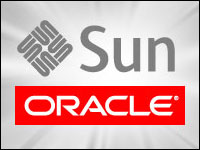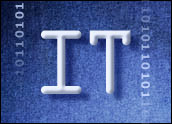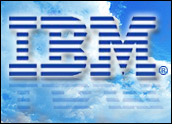The reported acquisition of Sun Microsystems by Oracle makes a ton more sense than IBM’s earlier failed bid. This new compact, if it succeeds, will bring as good an end to an independent Sun as the pioneering (yet long flagging) IT vendor could have hoped for at this sorry stage in its history.

However, there are much larger implications in Oracle’s latest super-grab than Sun’s demise and assimilation. Among them is the fact that IBM now — for the first time, really — has a true, full and global counterweight to its role and influence. Oracle plus Sun aligned with HP (which I fully expect) meets and begins to beat IBM at all the important full-service IT games.
This is truly healthy for IT and the global IT marketplace. IBM’s earlier purported bid for Sun always smelled bad to me. It was, it turned out, mostly a red herring. Perhaps Oracle needed the IBM roller coaster ride to focus its intentions. Nonetheless, the outcome is optimal. It bodes well for cloud computing too, as Oracle just about overnight becomes a cloud force to reckon with. I always thought Larry Ellison was just biding time on this one. The recession has hastened the timetable.
Hello, Losers
Other than IBM’s unassailed hegemony, the other losers in this are Microsoft (actually possibly creeping to irrelevancy faster than anyone could have imagined three years ago), SAP and Cisco Systems. Amazon may also be getting more competition soon on the Platform as a Service front. Using Sun’s cloud investments, implementations and plans, Ellison can also quickly forge together his own counterweight to Salesforce.com. No need to buy it now (for a while).
Open source in general, too, may take a hit, as I don’t expect Unbreakable Linux to remain Oracle’s point on the operating system arrow. Solaris will be the prime Oracle OS for performance, meaning Oracle’s channel pipeline to Red Hat will shrink. MySQL will be a means and not an end for Oracle, which would, of course, prefer an Oracle 11g cloud.
Suffice to say that whatever momentum Sun had behind open source everywhere will be muted to open source sometimes as a ramp to other Oracle stuff, or to grow the community and keep developers happy.
Like IBM, Oracle will have little interest or need for open source middleware or service-oriented architecture (SOA) components. Further, given Oracle’s early and deep interest in Eclipse and OSGi, the Java tools will stay free and open (with a lot of Oracle wizards embedded across the database and other middleware). The tussle for influence between Oracle and IBM in Eclipse and the Java Community Process (JCP) will be great fun to watch in coming years. Again, this is healthy. (Good thing Sun opened this up, eh?)
No other company has shown an ability to merge and integrate at the massive scale and complexity that Oracle has. Its acquisition spree that began five years ago is unprecedented in its scope and level of success. We have no reason to suspect that the way it handles Sun will be any different.
As for the Winners
Winners on the deal include Java itself in the fullest and broadest sense. Oracle and IBM are the premier Java vendors, and the might of IBM (and its customers and developers) in the market will force Oracle to keep Java open and vibrant, while Oracle’s penchant for control and commercial success will keep Java safe and singular. I expect the old BEA WebLogic implementations now at Oracle to gather some minor bundles from Sun’s software portfolio, but Sun’s enterprise software stack (for all intents and purposes) is history. I can’t see Glass Fish or Net Beans going anywhere but bye-bye. Same with the Sun SOA stuff.
Most interesting will be the way that Oracle matches the Sun assets against HP’s burgeoning partnership with Oracle. Will HP perhaps buy Sun’s hardware, storage and integrated circuits intellectual property outright after the Oracle acquisition is final? I’d bet on it.
The Exadata announcement last fall is a good example of what to expect. Business intelligence is the killer enterprise application of the day (era), and Oracle and HP aim to win. Coupling Oracle BI and business applications is something special … better potentially than what IBM and SAP can do. Should we expect from this Oracle-Sun merger some more love or more between IBM and SAP. Oh, yeah!
We should expect to see a major go-to-market push by HP and Oracle, with all kinds of appliances and solutions portfolios. Both Oracle’s and HP’s love of virtualization allow all kinds of neat packaging. Expect some of the industry’s premier on-premises cloud solutions ASAP.
Indeed, we now have a land grab race for the modernized data center/private cloud between Oracle/Sun/HP and IBM. What’s more, HP with all the old DEC stuff, plus Sun’s Unix, may keep Unix alive and well while keeping IBM at bay with its everything mainframe lust.
On the blue sky front, consider if Apple and Google get closer to the Oracle-Sun-HP trifecta? Wow. Cloud city.
Larry Ellison correctly predicted a few years ago that only a few IT companies would remain. Maybe we should just remove the “IT” and keep it at only a few companies will remain — and Oracle will be one of them.
Talk about pure irony. It was when Oracle turned its back on Sun four years ago with the Unbreakable Linux and Java process business (Eclipse over NetBeans, OSGi support, etc.) that Sun’s nosedive deepened. In a sense, you could say that Oracle pushed Sun off a cliff in slow motion, only to catch the pieces at fire sale prices.
Dana Gardner is president and principal analyst at Interarbor Solutions, which tracks trends, delivers forecasts and interprets the competitive landscape of enterprise applications and software infrastructure markets for clients. He also produces BriefingsDirect sponsored podcasts. Disclosure: HP is a sponsor of BriefingsDirect podcasts.






















































Social Media
See all Social Media